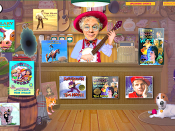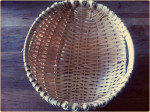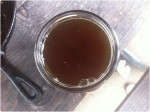The following article is co-written by friends Clay & Ragan Masterson and Kim Chisholm. It is the result of the research and experience Clay & Ragan have garnered over a decade of living a paleo lifestyle, and that Kim has learned as a vegetarian. It is also based on a foundation of knowledge many in the field of nutrition have developed over the years.

Choosing the Ancestral Lifestyle
While the human species has existed for about 2 million years, grain production is only approximately 12,000 years old, and the rise of processed foods – new to humans on an evolutionary scale – mirrors our uptick of weight gain and chronic disease. Traditional cultures across the globe, from hunter-gatherers to pastoralists to horticulturists, have shown little evidence of chronic disease – evidence suggests that lack of chronic disease in these groups flows from how they live, how they move, how they eat. This suggests that our bodies aren’t, after all, destined for chronic disease as they age – rather, it is the environment we’ve put them in that should bear the blame. What the science seems to say is that an ancestral way of life aligns the machinery of our metabolisms toward good health. There is nothing inevitable or natural about chronic disease
We don’t have to recreate ancestral life, we just need to bring back into our lives what we really need. We need to figure out how to live in this modern zoo we call society, and create a more natural life for the best health. Using an ancestral framework as a template, we can experiment and find what works best. While unique genetics, background, and circumstances will create different solutions for almost everyone, the basic pillars of Paleo can help guide the experimentation.

Pillars of Paleo – Foundations of the Ancestral Lifestyle
- Simple food – it’s not complicated, Just Eat Real Food. (JERF)
- Simple exercises – walking, lift heavy things, sprinting occasionally.
- Serenity instead of stress – mediation, nature, music.
- Sleep – 8-9 hours nightly
In addition, some other areas of focus could be:
- Connections – family, friends, nature and community.
- Purpose – what motivates you? How can you help others?
- As close to nature as possible – water, food, and lifestyle.
Paleo & Vegetarian Foods
Diet looks to be an especially powerful driver of health – adoption of a Western diet, rich in processed foods, has accompanied the development of chronic disease worldwide. Swapping out processed foods for simpler foods has been shown time and again to mitigate health issues. Remarkable stories of recovery from chronic illness through a clean nutrient-dense diet can be a source of inspiration. Some success stories
Eat foods that are ingredients not foods that have ingredients. An easy way to find the best food is to shop the perimeter of your supermarket. The produce and meat departments are where most of your food should come from. Buy organic where possible. Why Organic?
If you are purchasing something that does have a nutrition label, it is important to read the ingredients. You are looking for foods with as few ingredients as possible (think 5 or fewer). You should recognize all of the ingredients as food. Avoid any of the worst processed food offenders, wheat, corn, soy and sugar regardless of what they are called.
Watch for our next blog article with Paleo & Veggie Lifestyle Recipies!

How to read food labels
To maximize health, focus on foods with the highest nutrient density. Nutrient density refers to the concentration of micronutrients (mainly vitamins and minerals, but the term micronutrients also encompasses phytochemicals, essential fatty acids and essential amino acids) per calorie of food. This is a good list of foods, and this is a further listing of what it can do for you.
If you are interested in voting with your dollar while shopping, you can download the Buycott App to your phone so you can spend money only with the companies you want to support. Another app you might find useful is Pepperplate. It enables you to capture recipes you find online and seamlessly sync with your phone and shop with the integrated shopping list.
Eating whole, unprocessed foods will mean cooking at home but, once you get started, you’ll find that it can be quick and easy. Try batch cooking or cooking ahead on the weekends. A big batch of spaghetti sauce, stew, or curry can easily be warmed up during the week to serve over zucchini noodles or cauliflower rice. If you are going to cook something, try doubling or tripling the dish so you can have it again later in the week.

Breakfast, in particular, is easiest if cooked ahead. Try a frittata or quiche that you can reheat or eat cold. A green smoothie in the morning can be a good alternative. Or, you can always try skipping breakfast if you’re not hungry.
Physical Exercise
Physical exercise has complex endocrine and metabolic effects on insulin signaling, stress response, sleep, mental health, and even neuronal function in the brain. The good news is that research has shown that less is more where it comes to exercise.
Exercise shouldn’t be complicated, keep it simple. Start where you are and work up from there. The basic framework is walk/move often, lift heavy things occasionally, and sprint even less frequently.
Don’t forget to play. Play is a fantastic way to get a workout without feeling like it’s “work”. Find ways of being active that bring you joy and make you forget that you’re exercising. Sometimes this is referred to as a “playout”! (This removes the word “work” from the idea of being active.)
For a few ideas, check here, here and here.
Functional fitness and functional exercise are the latest gym buzzwords. They focus on building a body capable of doing real-life activities in real-life positions, not just lifting a certain amount of weight in an idealized posture created by a gym machine. The key to functional exercise is integration. It’s about teaching all the muscles to work together rather than isolating them to work independently. More on functional fitness here.

Serenity
Chronic stress causes chronic inflammation, which is a risk factor for obesity, diabetes, mood disorders and neurodegenerative diseases, and just about everything else.
Studies show that meditation is associated with improvement in a variety of psychological areas, including stress, anxiety, addiction, depression, eating disorders and cognitive function, among others. There is also research to suggest that meditation can reduce blood pressure, pain response, stress hormone levels and even cellular health. MRI scans have shown that long-term meditation can alter the structure of your cerebral cortex, the outer layer of your brain. Additionally, brain regions associated with attention and sensory processing have been shown to be thicker in those who meditate. In fact, there are over 3,000 scientific studies on the benefits of meditation
Sleep
Make sleep a priority in your life! Studies have shown over and over how important sleep is for our health. You can have everything else dialed in, but if you’re not sleeping well, health will suffer.
A good night’s sleep is incredibly important for health. In fact, it is just as important as eating healthy and exercising. Quality sleep can have some amazing benefits: it reduces the chances of obesity, improves concentration and cognition, decreases the risk of heart attack and stroke, improves glucose function and decreases risk of developing type 2 diabetes, improves your immune function, and decreases inflammation.
Blue light from electronic devices can interfere with production of melatonin and cause insomnia and other sleep disruptions. The use of amber glasses can mitigate the effects of electronic and artificial light. Several brands are available, but look for actual blue light blocking tests if they are available. Biorhythm safe spectra, and Uvex have been tested. Some folks swap out electronic light completely for firelight. They use candlelight and wood burning as sources of light after dark. Others simply restrict the use of technology after dark.
Where blue light suppresses the production of melatonin in the evening, in the morning it’s good to have blue light. It helps wake you up and signals your body that it’s daytime. Full spectrum lighting is sometimes used to treat Seasonal Affective Disorder (SAD). If desired, you can purchase lights and bulbs that provide a broad spectrum of light for day time use. You could use a lightbox in the morning hours to help you maintain your circadian rhythm.
Use a light alarm to wake up. A light alarm is an alarm clock that gradually goes from a black room to full brightness over 30 minutes and then has an audible alarm chime. This is a far more gentle way to wake up than the stressful klaxon that many folks use.
Set a bed time routine. This can go a long ways to help you keep your rhythm in place. It doesn’t have to be complicated. Something with just a few steps that make it easier to keep your circadian rhythm in sync.
- Set yourself a bedtime – This seems obvious, but is often missed. If you know you have to be awake at a certain hour, get to bed AT LEAST 8 hours before that deadline. If you don’t go to bed in this time frame, your sleeping window will be too small to get the needed sleep.
- Create a bedtime ritual – Be consistent with a routine that helps you relax and be prepared for the day tomorrow. It could be prepping the coffee and breakfast, getting your clothes ready for the next day, a hot drink, a book, dim lights, candle light whatever works for you. Just make it the same daily and do it consistently.
- Dim lights and slow down one hour before bedtime – Bright light and intense activity signal the body that it’s daytime. This will make it harder to fall and stay asleep.
- Limit the use of technology after dark – Reading e-mails (that may require attention) on electronic screens (blue light) can disrupt your routine and cause you stress (you’re trying to avoid this) Tweaks like the program f.lux can help to red-shift your computer and phone screens if technology must be used. (See the electronics section below)
- Know your caffeine limit. Everyone has a slightly different caffeine tolerance. If you are a person kept awake by caffeine, know your limit and keep to it. No caffeine after 3pm is a good place to start.
- Get up at the same time each day. Get your day started on the same schedule every day. Routine, routine, routine. The time you awake each day, helps set your circadian rhythm, try to be consistent.
Electronics after dark
With some electronics, installing a program like f.lux isn’t an option. In the case of an iPhone you can’t install it without hacking your phone. (Jailbreak) However, Apple has given you a couple of options to help mitigate blue light.
- “Night Shift” mode. Some iPhone and other iOS devices support the new Night Shift mode. This mode adjusts the color temperature of your iPhones screen to a more candle-lit tint instead of the crisp white that is for daytime use. The full detailed instructions are here.
- Redshift – via the accessibility settings. This is an even more dramatic shift in color. Using this setting will shift the entire screen to red, much like what you might use in stargazing at night (to help keep your night vision going). Setting the options to as red as you can make it will make things look a little strange, but it’s helpful if you must use electronics at night. The detailed instructions are here.
Connections
According to Psychology Today, “social connection improves physical health and psychological well-being”. Social connection strengthens our immune system (research shows that genes impacted by social connection also code for immune function and inflammation), helps us recover from disease faster, and may even lengthen our life. People who feel more connected to others have lower rates of anxiety and depression. Moreover, studies show they also have higher self-esteem, are more empathic to others, more trusting and cooperative and, as a consequence, others are more open to trusting and cooperating with them. Social connectedness therefore generates a positive feedback loop of social, emotional and physical well-being.
Purpose
In a recent study, people with a sense of purpose had a 15 percent lower risk of death, compared with those who said they were more or less aimless. And it didn’t seem to matter when people found their direction. It could be in their 20s, 50s or 70s. Purpose means different things to different people. The researchers said that it could be as simple as making sure one’s family is happy. It could be bigger, like contributing to social change. It could be more self-focused, like doing well on the job. Or it could be about creativity.
A sense of purpose can lead to some huge health benefits. If you’re curious about more of them, check this or this.
 Close to Nature
Close to Nature
Exposure to the natural world has measurable health benefits. Even a brief exposure reduces stress levels, and living around a lot of green space encourages people to be more physically active, gets them a little more Vitamin D, and reduces air pollution.
Studies have shown that living near forests and green is associated with a lower risk of death from all causes, especially respiratory disease and cardiovascular disease. Intervention studies have backed up the association by showing that nature exposure reduces stress. Living near a lot of green space may also encourage more physical activity, sun exposure, and air quality.
Further Reading and information for learning more about health from an ancestral perspective:
For further paleo/primal/ancestral health resources, two of the biggest conferences in the world happen at Paleo FX and the Ancestral Health Symposium. This year, Paleo FX will be held in Austin Texas in May. See the website here. AHS is in Seattle this year in September.
Books:
- Primal Blueprint by Mark Sisson (primal – dairy allowed, paleo – no dairy) – great 1st book, Mark’s Daily Apple (http://www.marksdailyapple.com/)
- Paleo Solution by Robb Wolf – Very little patience for ultra-dogmatic people. Find out what works for you. (http://robbwolf.com/)
- Paleo Cure by Chris Kresser – Heavy emphasis on the template over dogmatic rules.
Recommended Websites:
- Marks Daily Apple – Mark Sisson’s blog and resources. Transformation stories, recipes, and inspirational articles/blog posts. Has more than 10 years of history.
- Robb Wolf – Covers training and the Paleo diet, plus his podcast.
- Chris Kresser – A practitioner of integrated medicine, this blog debunks myths and provides solid (science based) recommendations for better health.
- NomNomPaleo – An absolutely amazing Paleo recipe blog with fantastic photos.









